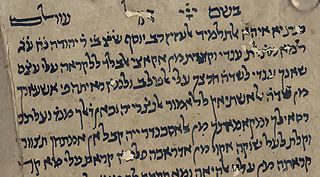
Back Hebreu medieval AN Idioma hebréu medieval AST Mezepoka hebrea Esperanto Idioma hebreo medieval Spanish عبری قرون وسطایی Persian Hébreu médiéval French תקופת הביניים של העברית HE Bahasa Ibrani Abad Pertengahan ID Lingua ebraica medievale Italian Fiteny hebreon' ny Andro Antenatenany Malagasy
This article has multiple issues. Please help improve it or discuss these issues on the talk page. (Learn how and when to remove these template messages)
|
| Medieval Hebrew | |
|---|---|
| עִבְרִית Ivrit | |
 Excerpt from 13th–14th-century manuscript of the Hebrew translation of The Guide for the Perplexed | |
| Region | Jewish diaspora |
| Era | Academic language used from the death of Hebrew as a spoken language in the 4th century until its revival as a spoken language in the 19th century. Developed into Modern Hebrew by the 19th century |
Early forms | |
| Hebrew alphabet | |
| Language codes | |
| ISO 639-3 | – |
| Glottolog | None |

Medieval Hebrew was a literary and liturgical language that existed between the 4th and 19th century. It was not commonly used as a spoken language, but mainly in written form by rabbis, scholars and poets. Medieval Hebrew had many features that distinguished it from older forms of Hebrew. These affected grammar, syntax, sentence structure, and also included a wide variety of new lexical items, which were either based on older forms or borrowed from other languages, especially Aramaic, Greek and Latin.[1]
- ^ Encarta-encyclopedie Winkler Prins (1993–2002) s.v. "Hebreeuwse taal. §1. Oud-Hebreeuws en Midden-Hebreeuws". Microsoft Corporation/Het Spectrum.
© MMXXIII Rich X Search. We shall prevail. All rights reserved. Rich X Search